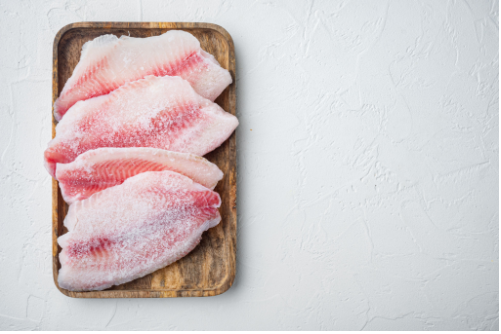Many people freeze fish in water, which results in some taste loss when the fish is defrosted. Fresh (store purchased or fresh catch) fish freezes nicely for up to six months if stored in an airtight container (fatty fish like salmon and trout; only three months). Maintain as much cooling as possible for the fish (on ice or in the shade). Allowing the fish to flop around on a hard surface will result in bruising and defects. Moreover, protect the fish cold on ice (to keep it from drying out) and with a raised bottom allowing water to drain before gutting and cleaning it (remember, kept in water causes flavor loss).
The taste and texture of any cooked fish depend on the initial process of freezing and thawing fish. Freezing is an excellent way to extend the shelf life of seafood and maintain fish’s natural flavor. Fresh fish should be prepared within two to three days after purchase; if you don’t plan on cooking it, freeze it right away to maintain its freshness.
The essential thing to know while freezing fish is that air is not your friend, and exposure to chilly air might cause the fish to dry up and lose its flavor and texture. Many people are unaware of the proper handling of freshly caught fish. Therefore, Frozen fish exporters in the US have listed below the tips and methods of freezing and thawing fresh to preserve its taste and appearance.
3 Methods To Store Frozen Fish
- Ice Glazing Method
Ice glazing is a technique that involves soaking the fish in gently salted ice water and then laying it on a baking sheet coated with parchment paper in the freezer. Allow the water on the fish to freeze, then continue the process until the fish has a 14-inch thick layer of ice on it. You can either place the ice-glazed fish in an airtight Ziploc bag, or vacuum seal it and store it in your freezer at this stage. You can freeze your fish for up to 6 months if you use this approach.
- Vacuum Sealing Method
If you don’t have time to ice coat your fish before freezing it, you can vacuum seal it instead. Pre-freeze your fish for 1-2 hours before vacuum sealing to keep the moisture in the fish. Pre-seasoning or marinating your fish before vacuum sealing is also reasonably frequent since this procedure truly seals in the taste. USA’s frozen fish exporter added that It’s fine if you don’t want to season your fish. Set your fish in a vacuum bag, seal it, and then place it in your freezer. When adequately preserved in the freezer, vacuum-sealed fish can survive up to two years.
- Ziploc Freezing Method
Finally, if you don’t have time to ice glaze your fish and don’t have access to a vacuum sealer, you can freeze your fish in a Ziploc bag with water. This approach is precisely what it sounds like, and it’s a quick and straightforward way to keep your fish safe. In this method, water replaces the vacuum seal and the ice coating, acting as a barrier to keep the fish from drying out or experiencing freezer burn. You’ll need a Ziploc bag that’s the right size for this procedure, preferably not too big or too little. After that, fill the Ziploc bag halfway with mildly salted water, just enough to submerge the fish. After that, press out any excess air in the bag, seal it and store it in the freezer. You can freeze your fish for up to three months using this procedure.
What Is the Shelf Life of Frozen Fish?
Fish that has been appropriately frozen will last up to 6 months in your freezer. This rule does have a few exceptions. Fatty fish like trout and salmon have a lower freezer shelf life, and they’ll only last up to three months. After being frozen, the texture of a particularly fatty fish, such as bluefish, will alter. In fish cakes or spaghetti, it’ll still be delicious.
How To Defrost Frozen Fish Correctly
The essential thing to remember while thawing or defrosting frozen fish is gradually doing it. Allowing frozen salmon to lie in the refrigerator will allow it to defrost slowly. The disadvantage of this approach is that it takes time, and you must remember to do it long before you want to cook the fish. Frozen fish exporter’s rule of thumb is to plan one day ahead and let your fish for 24 hours properly thaw in the fridge, depending on the thickness of the fish.
If you forget to take your fish out of the freezer and want to eat it sooner rather than later, you can use a rapid thawing method to beat the clock. However, it isn’t the perfect way. Follow these procedures if you need a quick thawing method that doesn’t need wasting water by submerging frozen fish in the water until it thaws.
Place the fish in a big bowl with semi-cold to room temperature water and immerse it for 1 to 15 hours, using the Ziploc bag to freeze it. If your fish is still frozen after an hour, continue the process for another 30 minutes to an hour. Your fish is ready to fry after it has thawed completely. For More Info gatradingnetherlands


